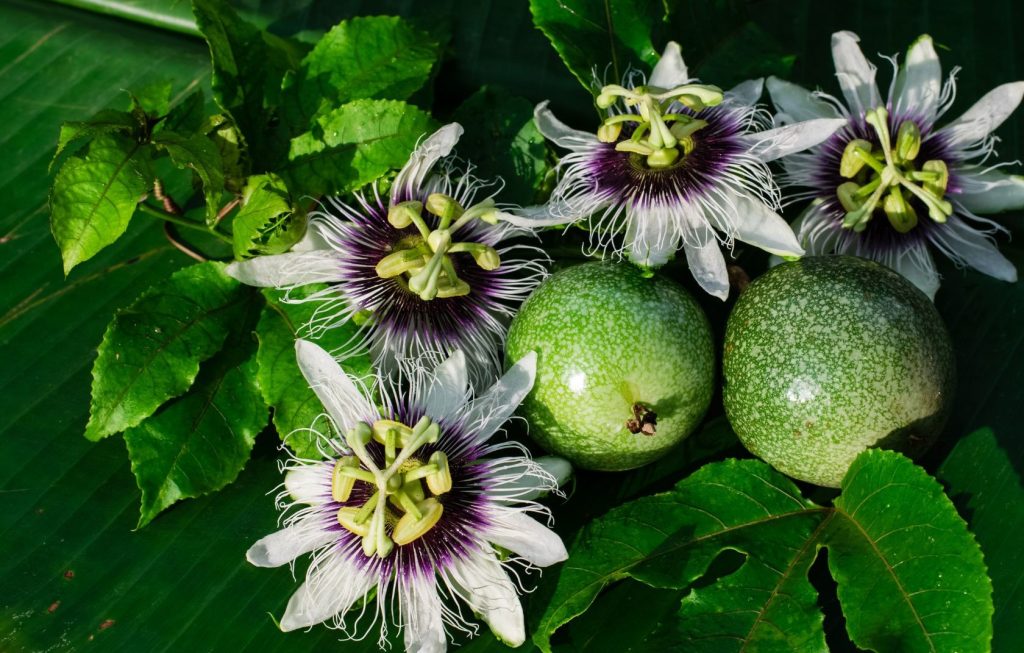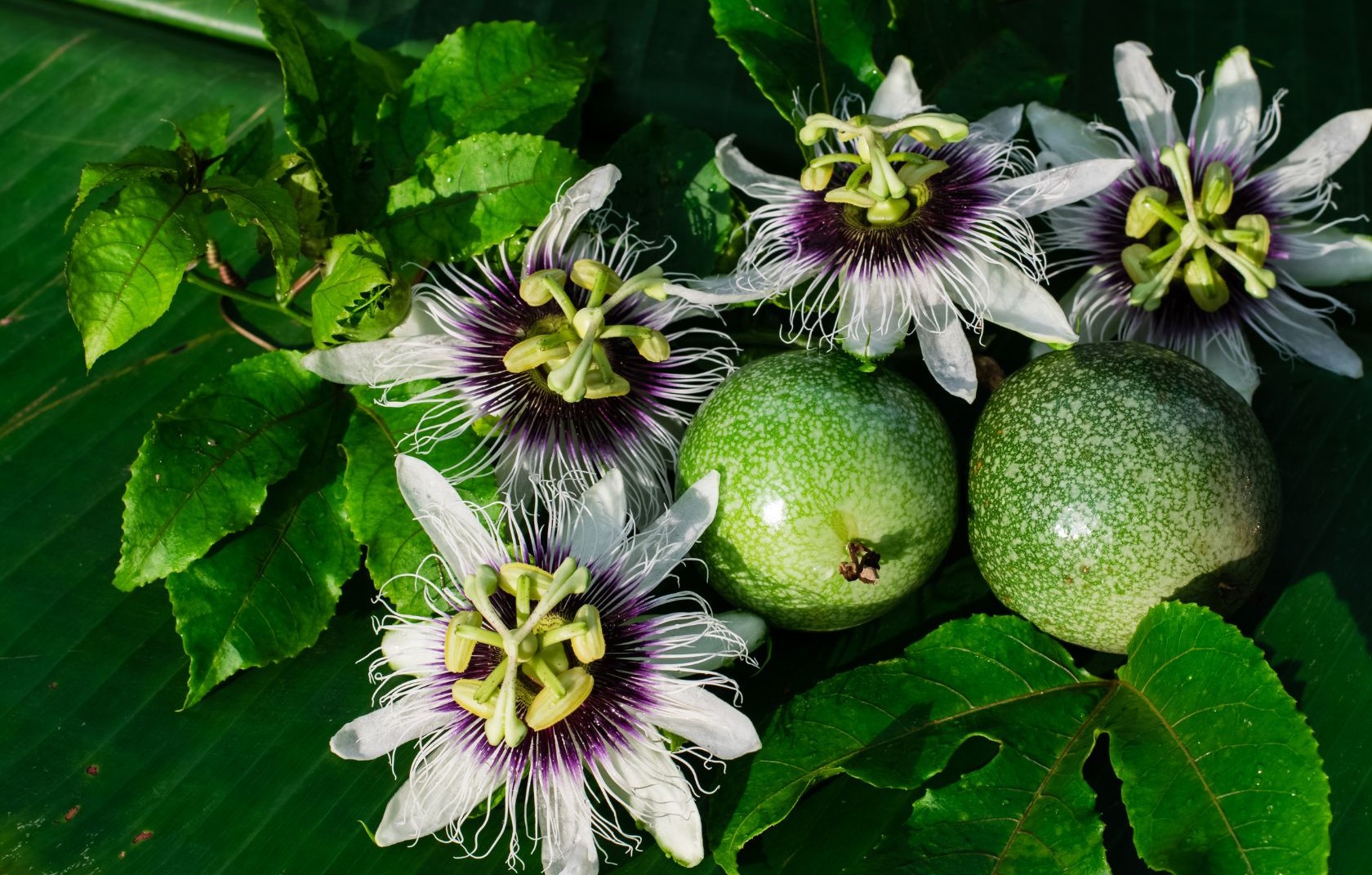Passion fruit, belonging to the Passifloraceae family, is a tropical fruit native to Brazil and South America. It can grow up to 6 meters in height and is widely cultivated in tropical and subtropical regions. While yellow and purple passion fruits are the most common, the purple variety is the most popular. Rich in fiber, Vitamin C, and provitamin A, passion fruit offers benefits such as improving eyesight, aiding digestion, and reducing the risk of Type 2 diabetes. Cultivators use seeds, cuttings, or grafting for propagation, with cuttings being preferred for commercial cultivation. They transplant the vines before the monsoon and use staking and trellising to support the growing vines.
Introduction
- Origin and Distribution
Passion fruit (Passiflora edulis) is a tropical fruit from the Passifloraceae family. It originates from Brazil, Paraguay, and Argentina and is now widely distributed across Asia, Europe, North and South America. - Description
The passion fruit plant is a vigorous, shallow-rooted perennial vine that climbs using tendrils. It can reach heights of about 6 meters (20 feet). Also The leaves are alternate, with three lobes, measuring 8-16 cm long and dark green. Also The solitary flowers feature five colored tepals and a large corona with radial filaments that curl. Also Depending on the variety, the plant typically fruits in 5 to 18 months, with fruiting occurring in early summer. The fruit is tropical but some varieties can survive in subtropical climates. It is round or oval, with a tough outer rind and a juicy, seed-filled interior. Also Passion fruit comes in various colors, including purple, yellow, red, and green, with yellow and purple being the most common.
2.1 Varieties
The main varieties of passion fruit are:
- Yellow Passion Fruit: Passiflora edule f. flavicarpa
- Purple Passion Fruit: Passiflora edulis Other varieties include Sweet Granadilla, Giant Granadilla, Cholupa, and Banana Passion Fruit, though these are less common.
- Purple Passion Fruit: Found in upper midland to highland zones (1200-2000 meters above sea level), it is small, oval or round, with purple skin. Also These fruits, about 4-5 cm in diameter, are known for their superior aromatic flavor and are more popular in the export market.
- Yellow Passion Fruit: Typically found in midland and lowland zones, this variety has slightly larger fruit (5-7 cm in diameter) with yellow skin. It is more tolerant to soil-borne pests and diseases, such as Phytophthora root rot, nematodes, and brown spots, and is often used as a rootstock for the purple variety.
- Sweet Granadilla: Passiflora ligularis, an oval-shaped fruit with a pointed end, has pale yellow or grayish skin and a less acidic flavor.
- Giant Granadilla: Passiflora quadrangularis is the largest of the passion fruit species, with a thick, elongated fruit and light green skin. It is relatively tasteless compared to other species.
- Cholupa/Gulupa: Passiflora pinnatistipula has yellowish-green or reddish-brown skin and is similar to the yellow passion fruit.
- Banana Passion Fruit: Passiflora mollisima, resembling a banana and measuring nearly 10 cm long, has yellow skin and a sweet or slightly acidic taste with yellow or orange pulp.
2.2 Nutrient Content
Passion fruit is highly nutritious, especially rich in fiber, Vitamin C, and provitamin A. Raw passion fruit contains 70% water, 22% carbohydrates, 2% protein, and 0.7% fat. It provides Vitamin A (25%), Vitamin C (50%), Calcium (1%), Iron (8%), Vitamin B6 (5%), and Magnesium (7%).
2.3 Medicinal Properties
Passion fruit is pack with phytochemicals such as polyphenols and carotenoids. The yellow variety contains prunasin, while the peel and juice have cyanogenic glycosides. The health benefits include:
- Fiber aiding in preventing constipation and improving digestion.
- Beta-carotene converting to Vitamin A, supporting eyesight and potentially lowering cancer risks.
- Antioxidants protecting the body from free radicals.
- Polyphenols reducing chronic inflammation and heart disease risks.
- Seeds containing piceatannol, which improves insulin sensitivity and helps reduce Type 2 diabetes.
- The flower of the purple passion fruit being use to treat insomnia, asthma, anxiety, and menopause.
- Magnesium supporting brain function and mood, with low sodium content helping to reduce blood pressure.
- Cultivation Practices
3.1 Propagation
Propagation can occur through seeds, cuttings, or grafting, with cuttings being preferred for commercial cultivation. For seedlings, extract and ferment seeds for 3 days, then shade dry. Sow seeds shallowly, with germination occurring in 14-21 days. Also Transplant seedlings early in the morning or late in the evening, ideally at the onset of rain or under irrigation.
3.2 Land Preparation
Prepare the land one to two months before planting by removing perennial weeds, ploughing, and digging pits. The recommended pit size is 45x45x45 cm with a spacing of 2×3 meters. Fill the pits with a mixture of topsoil, 15 kg of FYM, and 125 g of TSP per acre, and let this mixture settle for at least 3 weeks before transplanting.
3.3 Training (Staking and Trellising)
Construct trellises for the climbing vine. Also choose from overhead, vertical, T-trellis, or A-frame designs based on convenience. Also Set up trellises immediately after transplanting, using 3-meter-long posts with a 15 cm diameter, spaced 6 meters apart in the row.
3.4 Pruning
Passion fruit vines bear fruit on the current season’s growth. Systematic pruning after harvest promotes new growth and higher fruit yields. Cut back laterals to 4-5 buds after harvesting, with pruning done in April and December.
3.5 Top Dressing
Apply 100 g of NPK per plant before the rainy season begins. Provide foliar feed and trace elements as needed every 3 months.
3.6 Intercropping
In the first year, intercrop with beans, cabbages, and tomatoes, ensuring these crops receive their own nutrition. Also Avoid intercropping with cucurbits, maize, cowpea, sorghum, okra, and other creepers.
3.7 Harvesting
Harvest fruits 70 to 80 days after pollination, typically at the end of summer or early winter. Fruits are ready to pick when they are plump and fully colored.
Conclusion
Brazil, Ecuador, and Peru are major exporters of passion fruit. Also with increasing global awareness of health and nutrition, passion fruit’s nutritional profile—rich in fiber, Vitamin C, and polyphenols—makes it increasingly popular. The purple passion fruit is more common than the yellow variety. Cultivation can occur through seeds, cuttings, or grafting, and fruiting happens 12 to 18 months after sowing or 70 to 80 days after pollination.


